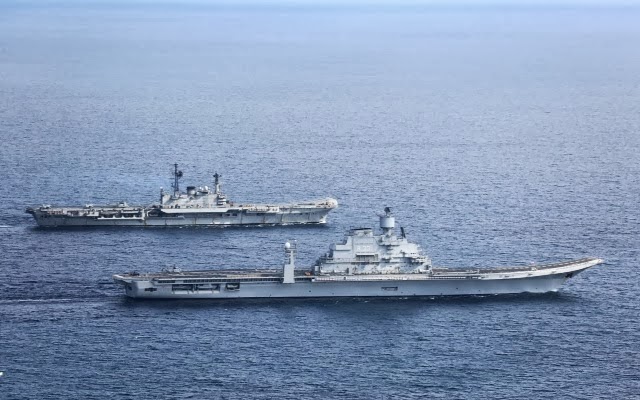Two Russian submarines are entering service just in time for the Russian Navy Day, which falls on July 27 this year: a Yasen class nuclear attack submarine Severodvinsk and a Borei class ballistic missile submarine Alexander Nevsky.
Yasen Class SSN - Severodvinsk ( Image Courtesy - en.ria.ru )
Construction of the Severodvinsk began in 1993, but its completion was significantly delayed and submarine was finally launched in 2010. The submarine, whose rivals are the US Navy’s Seawolf class and Virginia class submarines, is equipped with the Russian equivalent of the US Tomahawk missile, which can carry a nuclear warhead and has a firing range of up to 3,000 kilometers (1,800 miles).The Yasen-class submarine also has additional missiles that can be used for high-precision strikes against ground targets.
Borei Class SSBN - Alexander Nevsky ( Image Courtesy - en.ria.ru )
The Borei class Alexander Nevsky submarine began trials in October 2010. It was involved in test-firing Bulava intercontinental ballistic missiles, which all Borei class submarines are equipped with. Alexander Nevsky is the first series-built submarine of the Borei class. Two additional Borei class submarines and two Yasen class submarines are currently under construction. In total, Russia plans to build 8 Borei-class submarines and 8 Yasen-class submarines by 2020.
Russia has been stepping up the development of its navy since Crimea became part of the Russian Federation in March. In addition to the Russian naval base in the Crimean city of Sevastopol, Russia is developing a port in the country’s southern city of Novorossiysk, so that part of Russian’s Black Sea Fleet vessels and troops could be deployed there.
By 2017, six Admiral Grigorovich class frigates and six improved Kilo-class diesel-electric submarines will join the Black Sea Fleet.
News Courtesy - en.ria.ru





